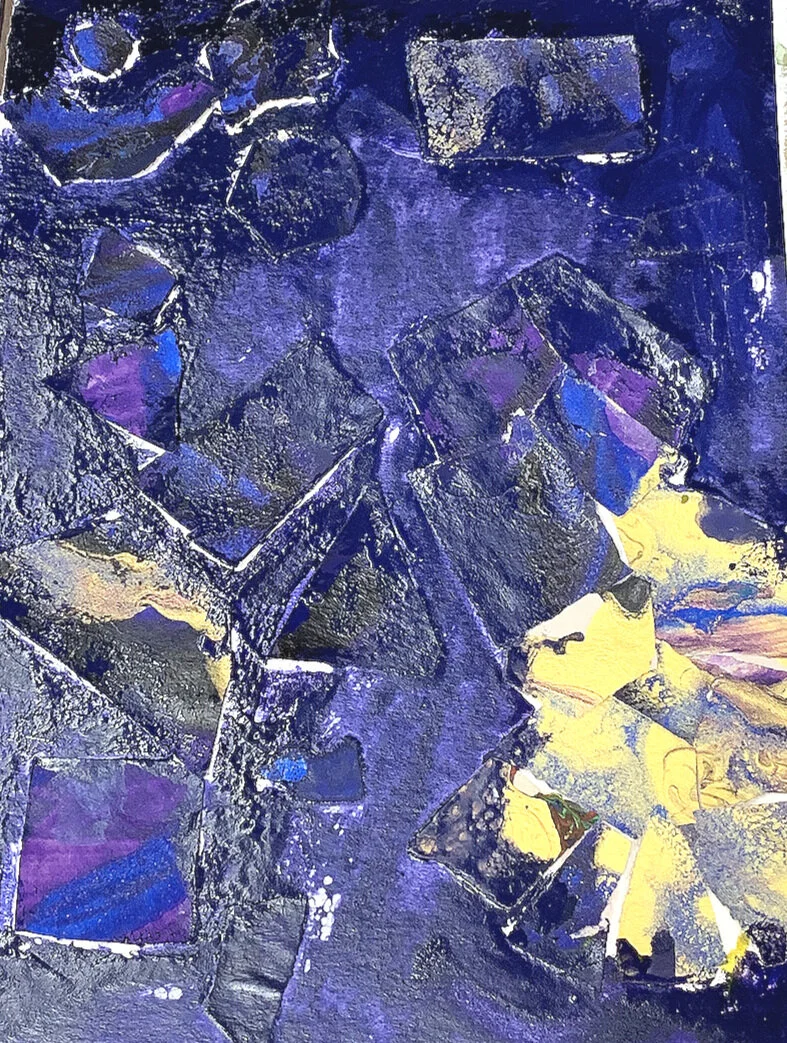Planning Backwards Model
Name of Project: PART 3/3: Paint Collages Inspired by Jack Whitten
Teacher: Lula McConnell
Age or Grade Level: Prepared for 3rd grade
Visual Arts Content / Standards
MN Arts Standard 3501.0820
Subpart 1a - Foundations:
The student will use foundational knowledge and skills while responding to, creating, and presenting artistic work.
Subpart 5b - Connect:
The student will understand that artistic works influence and are influenced by personal, societal, cultural, and historical contexts, including the contributions of Minnesota American Indian tribes and communities.
National Core Arts Standard:
Relate artistic ideas and works with societal, cultural and historical context to deepen understanding.
Overview of Project
This will be the third part of a 3-part lesson series based on the life and work of renowned painter Jack Whitten. We will explore his involvement in the Civil Rights movement of the 1960s*, his work as an artist in New York City, and his famous break from traditional painting techniques to collage work using hardened paint.
This week, in Lesson 3, I will present a shorter slideshow reviewing content from the previous two lessons: Who is Jack Whitten? How does he paint? What is abstraction? Why do we use abstraction? What is a tesselation?
I will introduce the concept of background/foreground. We will use examples from Jack Whitten’s work as well as Faith Ringgold’s story quilts to differentiate the background from the foregeound in both abstract (Whitten) and representational (rRnggold) works. We will then add an acrylic wash background to our collages from the past two lessons. The watercolor paint bonds to the watercolor paper, but not to the acrylic paint. This provides a good opportunity to briefly discuss how paint is made and why different bases make paint work differently.
“Big Ideas”/ EssentialQuestion(s)
What emotions do we feel when seeing and making political work?
What is abstraction? Why do we use it?
How do two artists’ work in different styles relate to each other foundationally?
Student Outcome Objectives
Students will:
1. Identify foregeound and backgoround in abstract and representational work
2. Create work in the style of Jack Whitten
3. Experiment with latering different paint types
Prior Knowledge
Students have now spent two weeks learning about abstraction, innovating painting techniques, and the work of Jack Whitten.
In the past, I taught a lesson on how to make paint by mixing pigment with a base, so the kids have some background knowledge of differences between paints.
Students previously completed a lesson with a fellow teaching artist based on Faith Ringgold’s story quilts.
Examples of Artwork
See (and feel free to use) attached slideshow:
Assessment
This will be our final lesson in the style of Jack Whitten. Observe final compositions, how students choose to combine colors. Do students notice that the watercolor bonds with the blank watercolor paper but not the acrylic paint chips? Can the students tell me which part of their work is the background and which is the foreground? Can students connect their emotions to the work they are creating?
Materials
Paint pours collages from last week
watercolor sets, 1 per child
paintbrushes
cups w/ water for rinsing & paper towels for drying
Teacher Reflection
Some demo on how to clean watercolor brushes would have been helpful. I started demoing the watercolors and a lot of kids were like “we know how to use watercolors!” I should have continued to demo, because it was clear that many kids did not, but I stopped. Definitely demo these skills so you don’t end up with a bunch of all brown watercolor pallettes.




